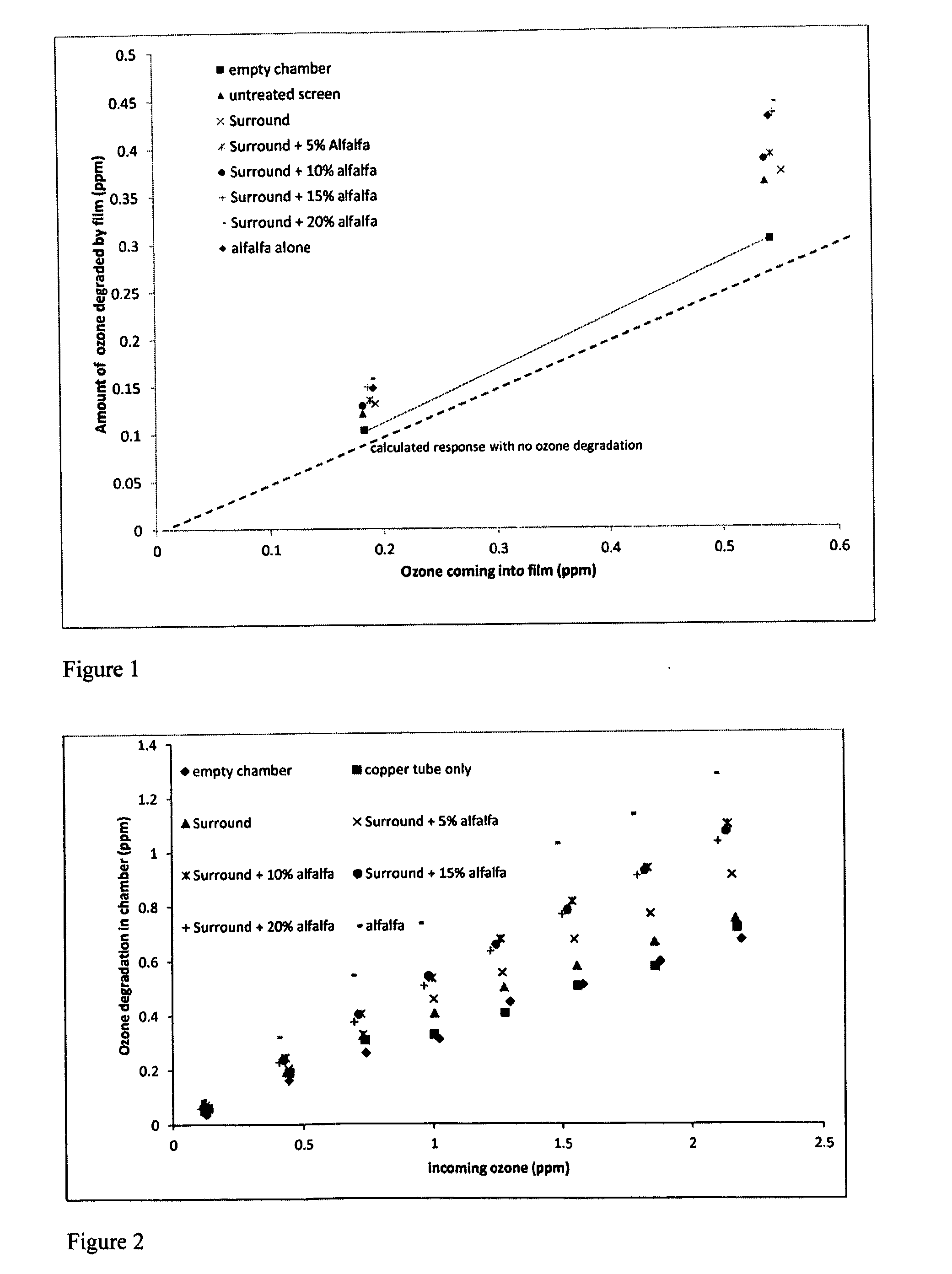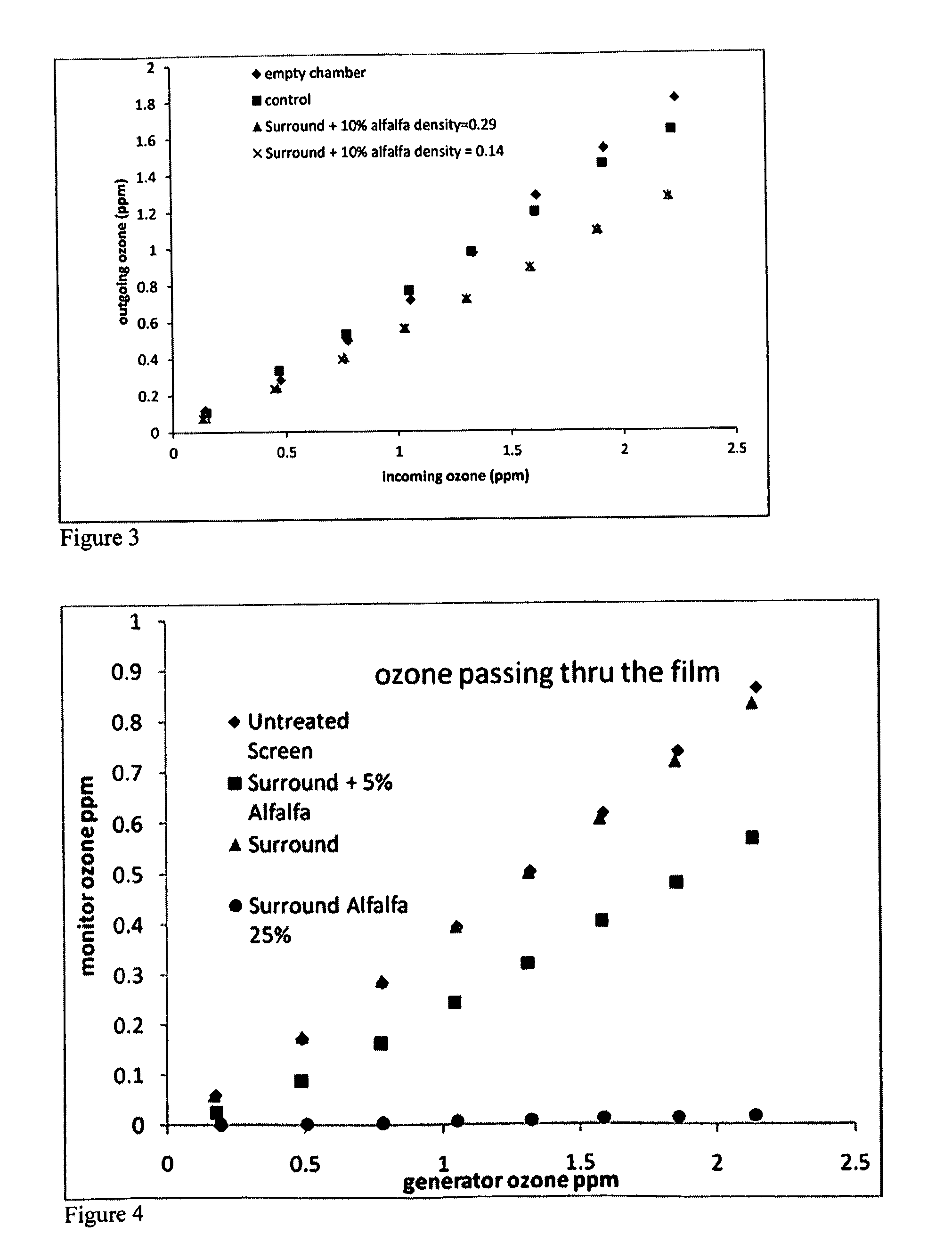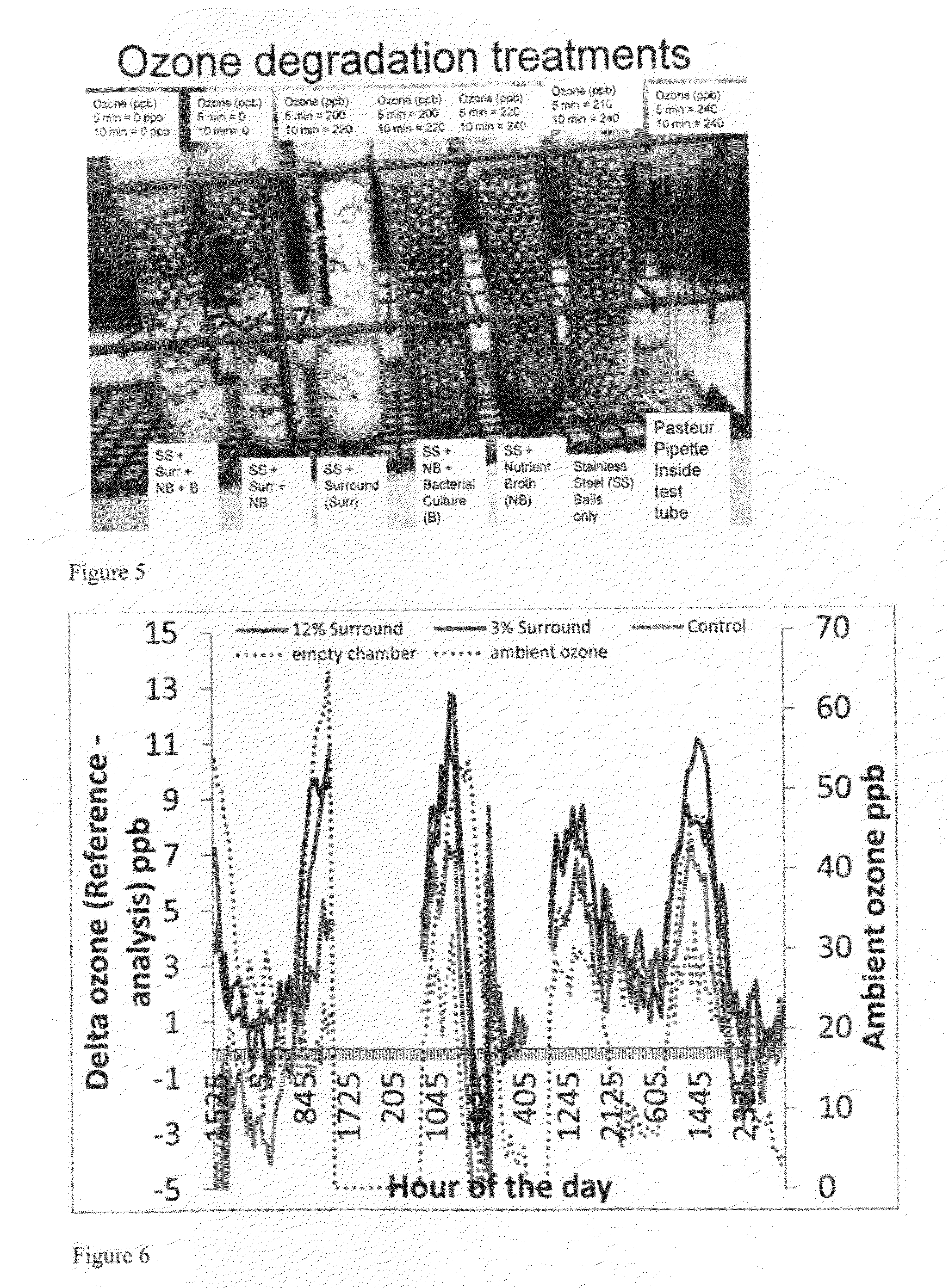Method of increasing photosynthesis and reducing ozone
a technology of ozone and photosynthesis, applied in the field of increasing photosynthesis and reducing ozone, can solve the problems of known adverse effects of ozone on photosynthesis, and achieve the effects of improving ozone-related photosynthesis damage, increasing photosynthesis, and improving photosynthesis
- Summary
- Abstract
- Description
- Claims
- Application Information
AI Technical Summary
Benefits of technology
Problems solved by technology
Method used
Image
Examples
Embodiment Construction
[0035]The present composition is capable of forming a persistent particle film on a plant surface, said particle film capable of greatly reducing ozone damage to plants and also reducing the quantity of ozone in the air around the plant. Particle films are known in the art. Most commercially available particle films for use on plants are based on calcite or kaolin, often contain about 0.5% of dispersants, and are used to treat sunburn and heat stress. Certain highly refined commercially available particle films, such as the Surround® calcined kaolin product and the Purshade® calcium carbonate product, each available from NovaSource, Tessenderlo Group, are known to increase photosynthesis and carbon assimilation by treated plants, and to reduce arthropod infestations. Some particle films, e.g., Eclipse™, purport to be a calcium and boron supplement for the treated plants.
[0036]Ozone damage has become a very significant problem with a number of plant species. Ozone (O3) is a metastabl...
PUM
| Property | Measurement | Unit |
|---|---|---|
| diameter | aaaaa | aaaaa |
| diameter | aaaaa | aaaaa |
| residence time | aaaaa | aaaaa |
Abstract
Description
Claims
Application Information
 Login to View More
Login to View More - R&D
- Intellectual Property
- Life Sciences
- Materials
- Tech Scout
- Unparalleled Data Quality
- Higher Quality Content
- 60% Fewer Hallucinations
Browse by: Latest US Patents, China's latest patents, Technical Efficacy Thesaurus, Application Domain, Technology Topic, Popular Technical Reports.
© 2025 PatSnap. All rights reserved.Legal|Privacy policy|Modern Slavery Act Transparency Statement|Sitemap|About US| Contact US: help@patsnap.com



